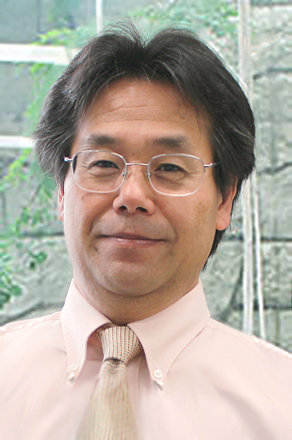
Join us to explore future design of stronger networks in disasters and daily life.
Laboratory on Complex Network Science
Professor:HAYASHI Yukio
E-mail:
[Research areas]
Complex Network Science
[Keywords]
Network Science, Wireless Communication, Fractal Statistical Physics, Algorithm, Optimization, Biological Mechanism, SNS, Influencer
Skills and background we are looking for in prospective students
It is better to understand basic mathematics and physics including graph algorithms and programming skills for computer simulation.
What you can expect to learn in this laboratory
You can learn what and how is desirable social innovation in thinking and exploring the problems of vulnerability in many real networks. Moreover, you can get many skills for network analysis, distributed computing, and sever management.
【Job category of graduates】 ICT(Information Communication Technology), Data Analysis, Machine Learning and Optimization, Social Innovation, Cloud Data Center, etc.
Research outline
Why is there a surprisingly common topological structure in many real networks of social, technological, and biological systems: communication, transportation, power-grid, social acquaintance networks, and so on ? Because they are constructed by a universal mechanism, such as the rule of universal gravity.
More precisely speaking, these networks emerge by “rich get richer” as efficiency-oriented selfish rule, in which a node tends to preferentially connect to profitable hubs with many links. Unfortunately, at the beginning of the 21 century, it has been found that they are extremely vulnerable against malicious attacks. It is a very serious problem that we have to do something, how our network infrastructures are vulnerable and damaged by frequently happen large disasters and attacks in the world.
Thus, apart from the conventional efficiency-oriented thinking, we are challenging to the following themes in order to find a new design principle for strongly robust networks in keeping efficiency.
1) Self-organized network
How to realize self-organized and self-healing networks in distributed manner by applying transdisciplinary approaches in fractal statistical physics, computer science (optimization or algorithm), and biological mechanism.
2) Emergent communication networks
Exploring adaptive allocation of base-stations or logistic bases in wireless communication or transportation networks against disasters through computer simulation on real geographical population data.
3) Distributed computing and autonomous social organization
Developing distributed algorithms with only local information which are suitable to multi-core computers in simulation and to realize self-organized and self-healing networks, including for problem solving by autonomous social teams or social network analysis.

Fig. Example of growing from vulnerable tree-like to strong onion-like networks with the nearly optimal robustness of connectivity.
Key publications
- Yukio Hayashi, "Fast convergence to an approximate solution by message-passing for complex optimizations" Nonlinear Theory and Its Applications IEICE, Vol.E15-N, No.2, pp.485-500, 2024.
- Yukio Hayashi, and, Atsushi Tanaka,"Practical counting of substitutive paths on a planar infrastructure network", Scientific Reports 12(14673),pp.1-11,2022.
- Yukio Hayashi, Atsushi Tanaka, and Jun Matsukubo, "More Tolerant Reconstructed Networks by Self-Healing against Attacks in Saving Resource" Entropy, Special Issue: Critical Phenomena and Optimization in Complex Networks, Vol.23(Issue 1), No.102, pp.1-15, 2021.
Equipment
More than 20 PCs with 300 cores.
Teaching policy
We strongly require your aggressive attitude and motivation to study a new research-filed of complex network science, although you will start from the elemental contents. In a master-course, since there already exist no-solutions, you have to explore what are problems and effective approaches in efforts of survey research. Thus, you should carry out your well-conceived plan, and present your research progress in our laboratory seminar ever week.